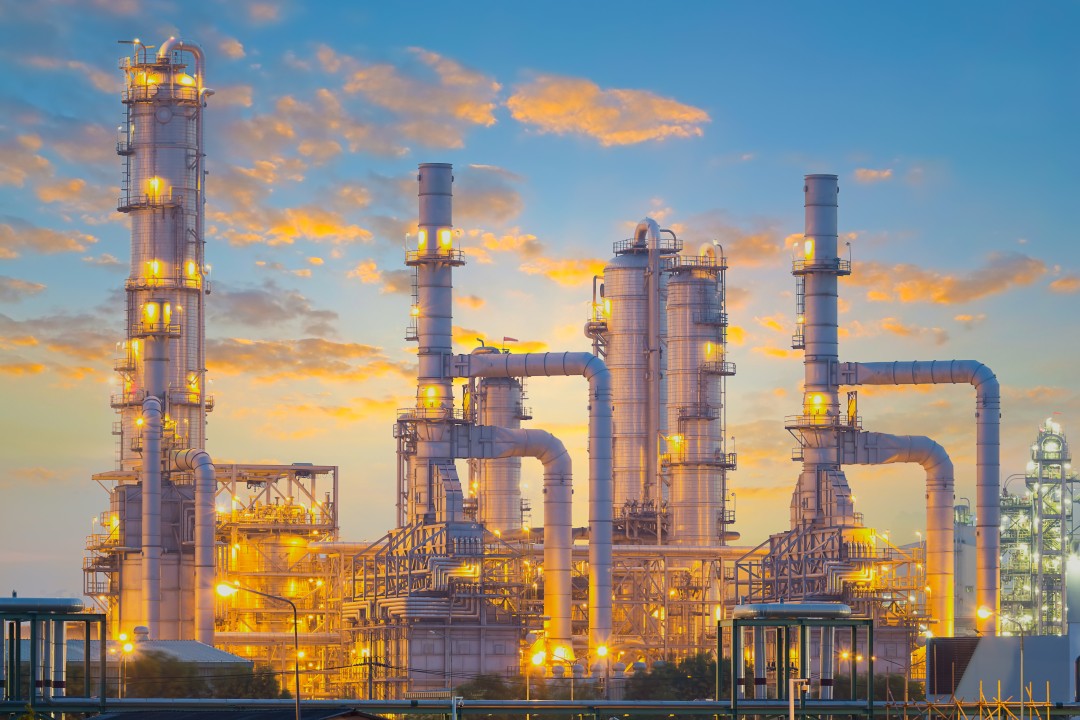A refinery turns a variable crude slate into a marketable product of constant quality and profitability. In this context, efficiency does not necessarily mean taking shortcuts.
Instead, it implies tighter control, more prompt adjustments, and lessons learned throughout the operating unit. This blog post explains areas for manager and engineer interventions where efficiency gains can be achieved alongside safety, yield, and compliance.
Working on Feedstock Quality
All improvements start with the crude slate. Refineries manage blends with different API gravities, sulfur percentages, and trace contaminants. Laboratory performance should rapidly analyze the crude so that results find their way directly into scheduling and cut point settings. Allowing crude properties to match unit constraints will avoid bottlenecks downstream.
With their real-time planning tool, planners will simultaneously integrate feedstock quality, distillation performance, and yield optimization information in a timely manner to avoid mismatches that drain margins.
Main Separation: Atmospheric and Vacuum Distillation
Fractionation is the first step in the refining process. Here, furnace duty, tray hydraulics, and reflux ratios dictate separation quality. Even small drifts in column operation ripple downstream, affecting conversion units.
Key efficiency measures include:
- Tight control of tower temperatures and pressures
- Frequent tray inspections to prevent fouling
- Tracking product split accuracy through shift KPIs
- Columns that consistently deliver stable cuts reduce variability in cracking and hydroprocessing.
Conversion Units and Hydroprocessing
Low-value residues become fuels and petrochemical feedstocks in conversion units. Fluid catalytic cracking, and hydrocracking, each bring their own economics.
Hydroprocessing, in particular, is critical for sulfur removal and product stabilization.
Refineries should:
- Monitor catalyst activity with online analyzers.
- Align turnaround schedules with catalyst deactivation, not fixed calendars.
- Adjust severity based on hydrogen balance rather than running flat out.
This disciplined approach improves yield without unnecessary energy use.
Heat Integration and Energy Management
Energy is one of the largest refinery costs. Heat integration through pinch analysis identifies opportunities where hot process streams can preheat cold ones.
Practical steps include:
- Recovering waste heat from flue gases safely
- Segmenting steam systems to match pressure needs
- Reducing fired heater duty by targeting a specific gigajoule-per-tonne benchmark
- Energy intensity should be tracked continuously.
Plants that reduce even 3 to 5 percent in fired fuel save millions annually.
Hydrogen Balance and Management
Hydrogen availability dictates how severely a refinery can run hydroprocessing and hydrocracking units. Reformers, membrane systems, and pressure swing adsorption improve supply, while smart balancing tools prevent bottlenecks.
Maintaining a rolling hydrogen balance in standard cubic meters per hour keeps planners aware of supply-demand gaps. This prevents situations where hydrogen shortages force operators to cut unit rates unexpectedly.
Advanced Process Control and Automation
Variability is the enemy of efficiency. Model predictive controllers can stabilize furnace outlet temperatures, reactor severity, and distillation cut points. A controlled pilot project, such as optimizing one critical tower, can show measurable results within weeks.
However, automation must be paired with training. With a view to intervening effectively under unusual conditions, operators ought to understand how controllers behave.
Maintenance and Reliability Practices
Given that breakdowns can erode margins even faster than any other aspect, identifying problems before any form of failure occurs using condition monitoring such as vibration analysis, thermography, and oil analysis is paramount.
To minimize downtime:
- Aggregate the monitoring outputs into one database;
- Rank interventions on the basis of risk and economic consequence;
- Adopt additive manufacturing for small critical components with remaining inspection and certification standards.
Predictive maintenance keeps surprise outages away and ensures a longer life of the equipment.
Environmental Compliance and Emissions Control
Efficiency and environmental performance are connected. Methane leaks, inefficient flaring, and underperforming sulfur recovery units not only harm compliance but also waste valuable hydrocarbons.
Use a mix of:
- Optical gas imaging for fugitive leaks
- Continuous emission monitoring on stacks
- Periodic aerial surveys for large sitesWith traceable reporting systems, companies can demonstrate progress to regulators and customers.
Blending and Product Quality Assurance
Blending is where margin can disappear quickly. Automated systems that monitor octane, cetane, and vapor pressure in real time reduce the chance of off-spec products.
Good practice includes:
- Version-controlled blending recipes
- Online analyzers at blending headers
- Extra sampling at tanks and ship loading points
- Consistent blending protects brand reliability and prevents costly reprocessing.
Short-Term Scheduling and Inventory Planning
Efficiency is not limited to process units. Daily scheduling tools that integrate shipping windows, tank constraints, and blending needs reduce demurrage risk and improve working capital. A structured short-term planning cycle keeps operations aligned with market requirements.
Creating a Culture of Efficiency
Technology is a necessary, but insufficient, condition. The operators, planners, and maintenance teams need to share information and trust the data. Standard operating procedures, incident reviews focusing on learning, and hands-on coaching transform efficiency from a project to something we do every day.
Final Thoughts
In regard to further optimization of refinery efficiency, continuous and measurable improvement in feedstock selection, distillation, conversion, energy management, and compliance will serve as the focal parameters. The consistent little wins add up to greater margins and performance.
Refineries that measure and manage gross refinery margin per barrel, specific energy usage, on-stream factor, and product quality conformance weekly will outperform their peers each time. With careful pilots, clear metrics, and attention to human factors, efficiency becomes not a slogan but a habit embedded in operations.



